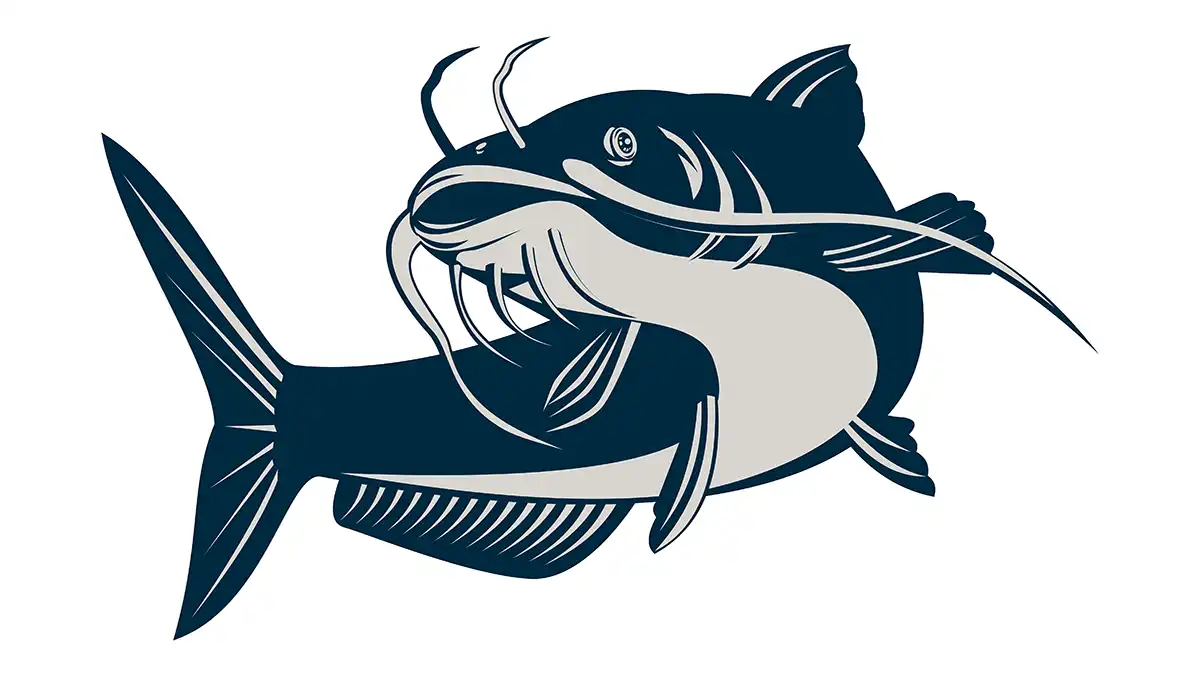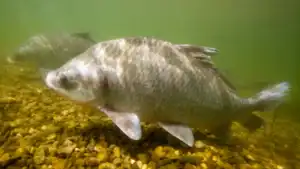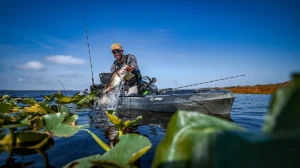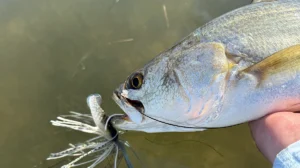Catfish scientifically fall into the order Siluriformes, which include the Ictaluridae family of fifty-one North American catfishes species. As well as the lesser know families of Sea Catfishes Ariidae, labyrinth catfishes Clariidae, and suckermouth armored catfishes Loricariidae. Let’s talk about the big three in catfish in the United States as well as other less common types of catfish that you may encounter in your fishing.
The Big Three of Catfish
Channel Catfish (Ictalurus punctatus) are the bread and butter of American restaurants serving fish. Highly sought after by anglers and the commercial fish market. They are one of the cheapest fish to raise in a hatchery, making them ideal for stocking in community ponds, lakes, and rivers. Channel catfish grow quickly and are found throughout most of North America due to anglers and states stocking these fish. Channel catfish don’t typically get bigger than 30 pounds but are typically more abundant than channel or blue catfish. The world record channel catfish weighed a whopping 58lbs.
Blue catfish (Ictalurus furcatus) live in the memories and storybooks of North America, due to authors like Mark Twain. The blue catfish is the largest catfish in North America, and its impressive size draws anglers to rivers in hopes of catching one of these giants. The blue catfish is predominantly found in rivers but can be found in lakes, too. These large fish can adapt to higher salinity levels and cause disruptions in ecosystems like Maryland, where they have been introduced to the Potomac River and the Chesapeake Bay. The current world record blue cat weighs 143 pounds.
To some, Flathead catfish (Pylodictis olivaris) are the ugliest fish in North America; to others, they are beautiful giants with unique colors and patterns. The elusiveness of the large catfish can make the catch even more rewarding for anglers who pursue these fish. Flathead catfish are the second largest catfish in North America. Typically found in turbid rivers, these fish like the deeper holes of the river. Their aggressive feeding behavior and ferocious appetites can make landing this fish a fun and difficult challenge. The current world record for flathead catfish is 123 pounds.
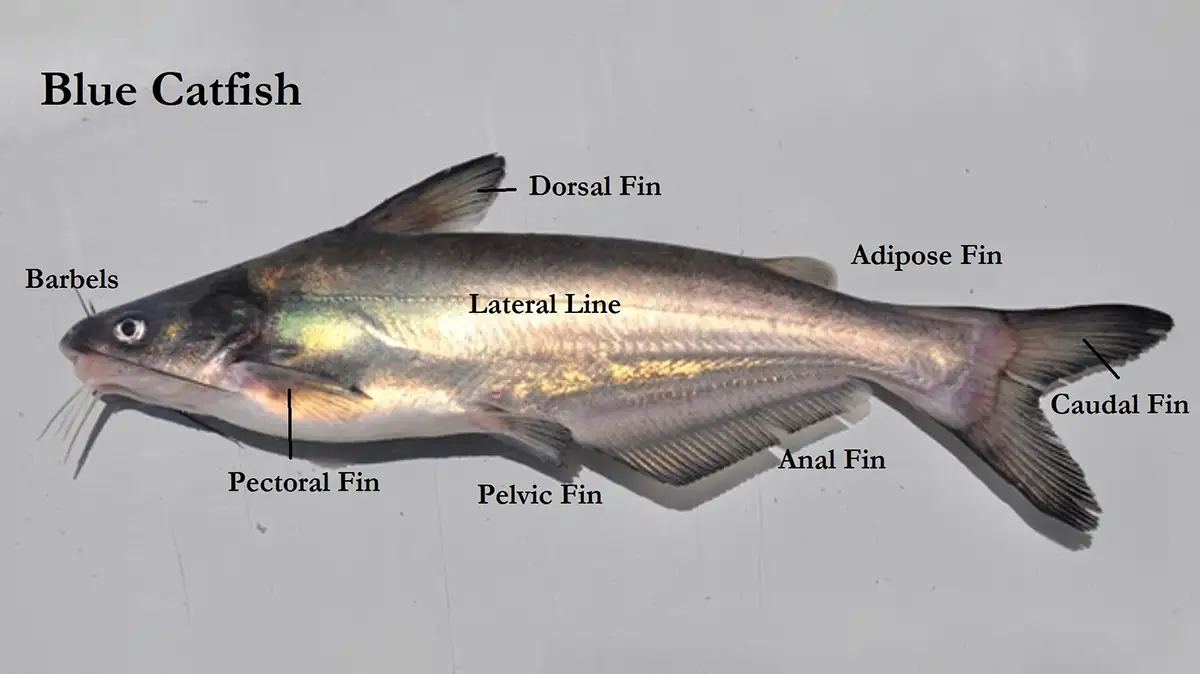
How to Identify Catfish
When identifying catfish, there are several things to look for, whether out on the water or on your next visit to the aquarium.
- Mouth orientation
- Barbel coloration
- Anal fin shape and ray counts
- Tail shape
- Body color
- Eye position

Blue Catfish
- Mouth orientation has the upper jaw extending slightly farther than the lower jaw
- Upper barbels are dark and lower barbels are grey to white
- The anal fin is squarish with 30-36 soft rays
- The caudal fin is forked and has rounded edges
- Color will range from bluish to light grey
- The eyes are further forward on the head and small in size
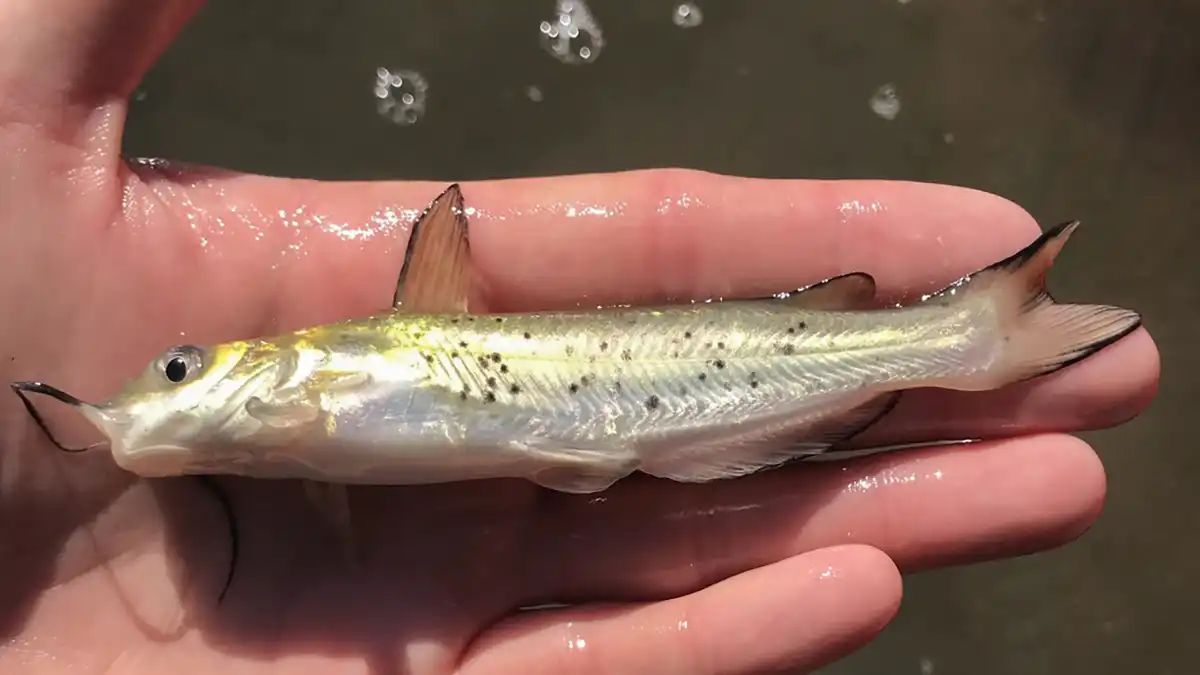
Channel Catfish
- The upper jaw extends farther than the lower jaw
- Barbels are grayish to white in color
- The anal fin is curved and has 24-30 rays
- The caudal fin is forked with round edges
- Color ranges from olive to dark grey
- The eye positions are more centered and larger in size
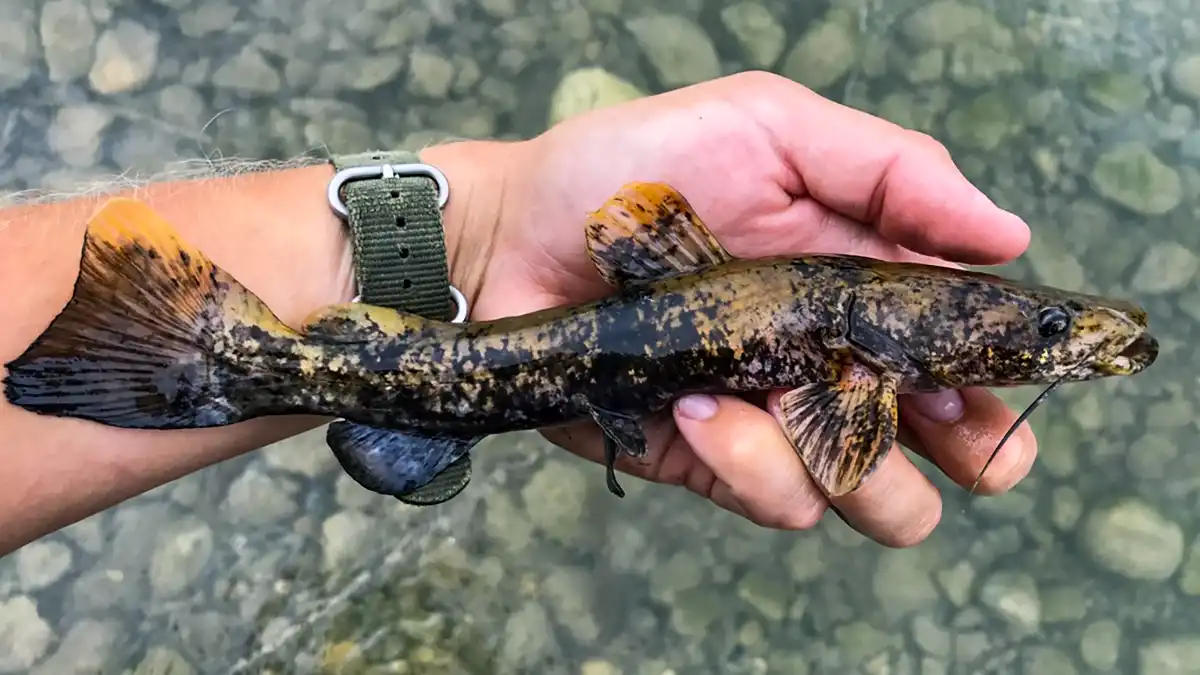
Flathead Catfish
- The lower jaw extends farther than the upper jaw
- Barbels are a lightish gray or white
- The anal fin is roundish with 14-17 rays
- The caudal fin is slightly notched
- Color ranges from pale yellow to brown.
- The eyes are further forward on the head and small in size
Other Catfish Species in the US
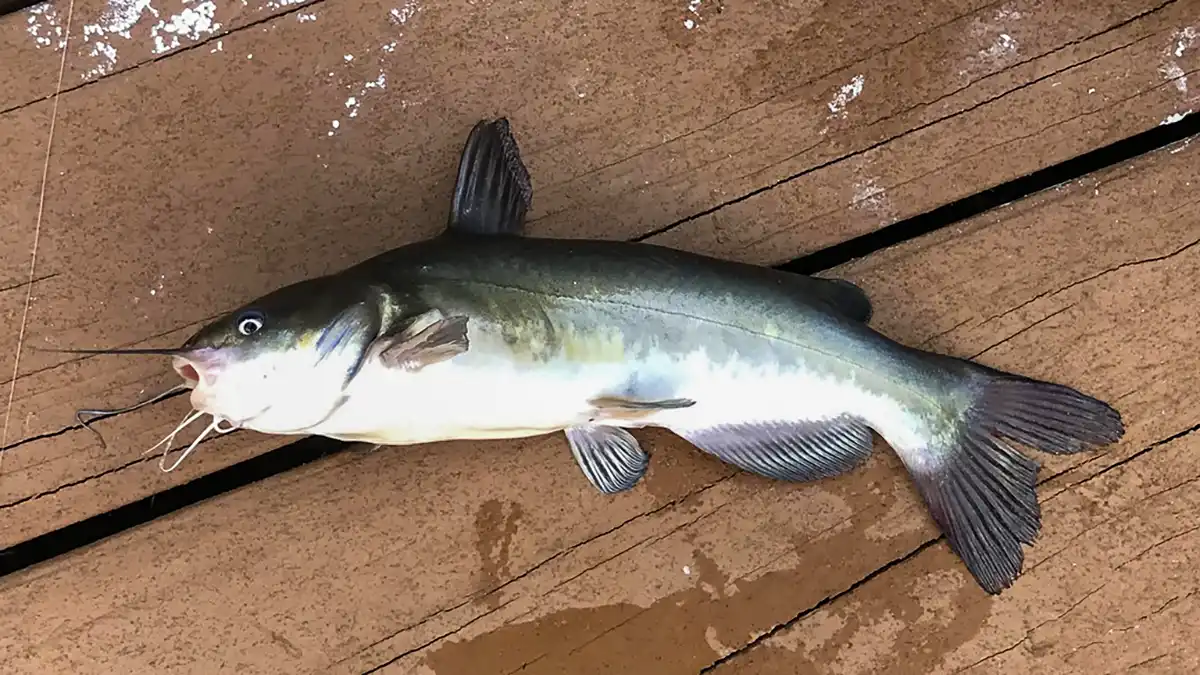
White Catfish
White Catfish (Ameiurus catus), sometimes referred to as white bullheads, are found on the eastern side of the United States from about Florida to New York. The preferred habitat of the white catfish is calm coves and slow-moving water in rivers. White catfish will reach about 16 inches in length, with some reaching up to 24 inches in size.
The white catfish is sometimes confused with the channel catfish. Anglers should use the mouth, anal rays, and the eye as a way to identify the fish if fishing in areas where both species are present. The upper jaw on a white catfish will extend farther than the lower jaw, the anal fin will have 22-24 rays, and the eye will contain a blue ring that encompasses the pupil.

Black Bullhead
Black Bullhead (Ameiurus melas) are commonly found throughout North America. Their native range is from Southern Ontario to northern Mexico, and they can be found as far west as Montana and as far east as New York. The preferred habitat for black bullheads is turbid areas where there is slow to no moving water in lakes, streams, or rivers. The black bullhead can be confused with yellow or brown bullhead. To identify black bullhead, anglers should look at the color, mouth, anal rays, and caudal fin.
The coloration of black bullheads can be slightly confusing because most adults are yellowish-brown or dark green. Younger black bullheads will appear black in color, and this is only during the spawn. It is recommended you don’t base the identification of bullheads on color because it could lead to a misidentification. Looking at the anal fin of black bullhead, anglers will find 17-21 anal rays. In looking at the caudal fin, anglers will see a fin with rounded edges that is slightly notched but not forked.
The mouth orientation of the black bullhead has the upper jaw extending farther than the lower jaw. The average size of black bullheads is about 16 inches, with anglers catching black bullheads up to 24 inches in size.

Yellow Bullhead
Yellow bullheads (Ameiurus natalis), sometimes called chuckle-head or white-whisker bullheads, are found in the central and eastern parts of the United States. The preferred habitat of yellow bullheads is rivers, streams, and lakes with some current and is slightly turbid to clear in color. Yellow bullheads are sometimes confused with brown bullheads. To identify yellow bullhead, anglers should use the barbels, mouth orientation, anal fin, caudal fin, and color to aid in identification.
The barbells on yellow bullheads are different from black or brown bullheads because they are white, whereas the other bullheads have dark-colored barbels. When looking at the mouth of a yellow bullhead, the upper jaw will extend past the lower jaw. Looking at the anal fin, there will be 24-27 rays present. The caudal fin will be smooth or slightly rounded with no notch or forks to the tail. The coloration of yellow bullheads will range from a yellowish brown to dark brown. The average size of yellow bullheads is about 12 inches, with some getting up to 17 inches in size.

Hardhead Catfish
Hardhead catfish (Ariopsis felis), sometimes called steelhead catfish or sea catfish, are found along most of the eastern coast and into the Gulf of Mexico. The hardhead catfish is the bait stealer or the trash catfish to coastal anglers. Hardheads are notorious for gulping their food rather than biting, which allows them to abscond with bait more easily than other fish. Hardheads are easy to identify compared to gafftop catfish.
The easiest way to distinguish between the two species is by looking at the dorsal fin, anal fins, and color of the two fish. The dorsal fin on a hardhead will come to a point and not extend toward the anal or adipose fin. The anal fin of a hardhead catfish will contain 18-20 rays. The coloration of a hardhead will range from greenish to light grey with a whitish belly. The typical size for a hard head is about 16 inches in length, and it can weigh up to 12 pounds at the largest sizes.

Gafftopsail Catfish
Gafftopsail catfish (Bagre marinus), often called gafftops, are found on the east coast of North America, the Gulf of Mexico, and the east coast of South America. The gafftopsail catfish is commonly caught among coastal anglers but is often confused with hardheads. To identify the gafftopsail catfish, anglers should look at the dorsal fin, anal fin, and color. The gafftopsail catfish dorsal fin is distinguished in that the fin looks ribbon-like at the tip and extends farther toward the anal and adipose fins. Gafftopsail catfish anal fin will contain 22-28 anal rays, as where the hardhead catfish will have fewer.
The coloration of a gafftopsail catfish is greenish-to-blue with a silverish stomach. The average size of gafftopsail catfish is about 18 inches, with the largest reaching lengths of up to 27 inches and 10 pounds in weight.
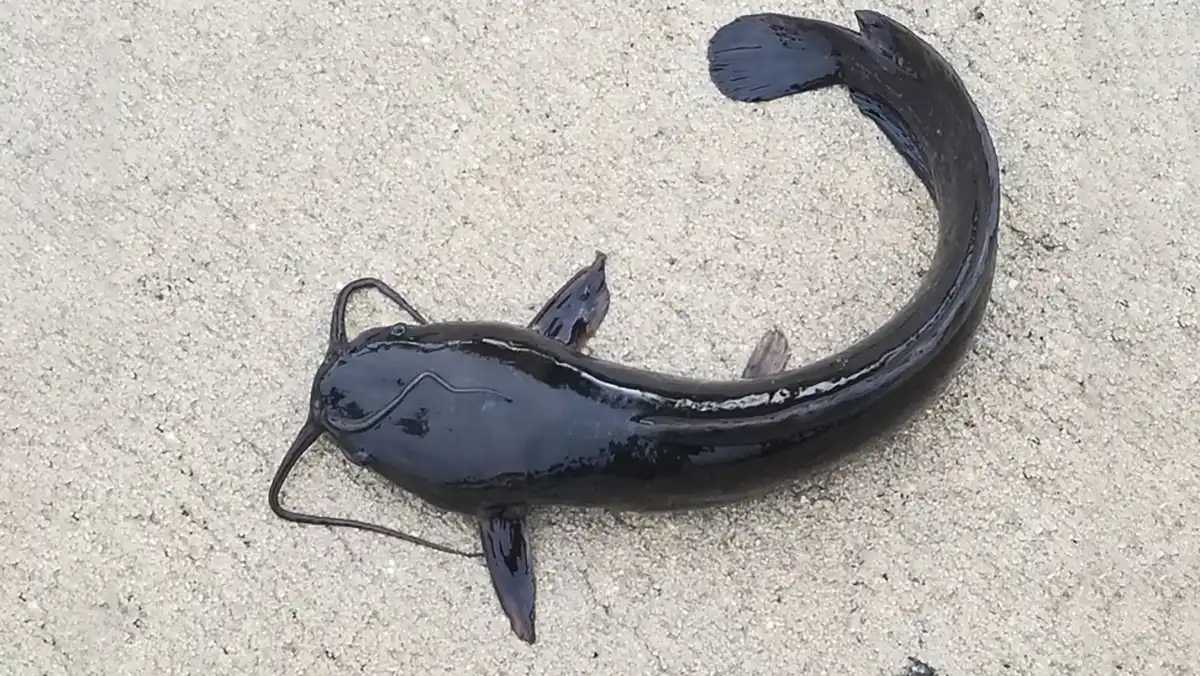
Walking Catfish
The walking catfish (Clarias batrachus), sometimes called the Thai catfish, is native to Southeastern Asia. Walking catfish get their name due to their ability to wiggle and jump their way to new areas. This family of fish has lung-like organs that allow them to gulp air as they leap and squirm to their new home. The walking catfish is important for aquaculture farms that raise fish to distribute to fish markets and is popular among subsistence anglers who use this fish to feed their families. Walking catfish are preferred in fish markets because they can easily be kept fresh due to their ability to survive outside of water. As long as the fish stays wet, the fish can survive for several days out of water.

Armored Catfish
Common Plecostomus (Hypostomus plecostomus), sometimes called plecos or armored catfish. Plecos are popular among aquarists and individuals who want to add some variety to a fish tank and attempt to control algae growth in the aquarium. The sucker mouth is easy to identify due to its dark-colored body, armored plating on the upper body, downturned mouth, and light-colored belly. Their entire body is covered in black spotting. Although, plecostomus are desired in aquaria, they are unfortunately an undesirable invasive species throughout the southern United States. As they outgrow their aquaria, they are often dumped into local waterbodies, which can negatively affect the native plant and fish populations.
